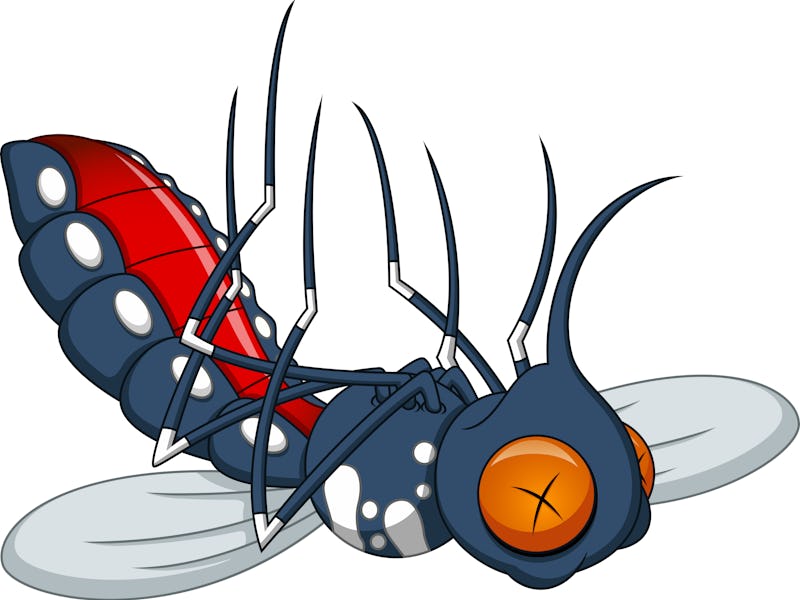These flying robots could be the key to eradicating malaria
Scientists are using drones to deliver female mosquito's birth control.

Mosquito-borne illnesses like malaria, dengue, and Zika, are among some of the world's most infectious diseases, killing millions of people annually. In 2018 alone, malaria killed 400,000 people. And the problem is only getting worse as global temperatures continue to rise. With growing concerns over the negative effects of insecticides, scientists have turned to another technological tool to help them drive down mosquito populations: drones.
Using industry-standard drones (with some important modifications,) scientists working in Brazil have developed a new method to safely air-drop sterile male mosquitoes into areas of high infection to trick female mosquitoes in mating with them -- subsequently creating non-viable eggs and driving down the overall population.
The researchers found that air-dropping these male mosquitoes, instead of manually releasing them on the ground in these areas, was just as effective at driving down mosquito populations as ground releases but was 20 times cheaper. This steep price decline means that efforts to control these populations could be much more widespread for the same original budget.
In a new study, published Wednesday in the journal Science Robotics, the first author and lead of the Human Disease Vectors group at the Joint Food and Agriculture Organization of the United Nations, Jérémy Bouyer, tells Science Robotics that previous air-drop methods for this form of mosquito "birth control," formally called the Sterile Insect Technique (SIT), have struggled to effectively disperse the sterile mosquitoes.
"The technique requires the continuous release of a large number of sterile insects of good quality over a given area," said Bouyer. "[But] the aerial release of mosquitoes has until now been a bottleneck in the application of SIT to control mosquito vectors of human diseases."
Vector-borne diseases, like malaria from a mosquito bite, account for 17 percent of infectious diseases and cause 1 million deaths annually.
Part of what kept aerial drops from being successful before, explain the authors in the study, is the delicate nature of these mosquitos. Creating an apparatus that is too rough could lower the quality of mosquitos (e.g. they may be torn or crushed while being released) and keeping the insects too cold before release could be damaging as well.
In a number of laboratory trials, the researchers worked to perfect their mosquito delivery apparatus to ensure that a sufficient number of mosquitoes were released per minute without being freezer-burnt or otherwise damaged.
After some trial and error, the researchers designed an apparatus that kept the insects between 46 and 50 degrees Fahrenheit and could safely release 5,000 to 15,000 mosquitoes per minute at an altitude of 164 to 328 feet above the ground across a wide area. The drone could be operated from the ground and was equipped with cameras for researchers to monitor the release of the sterile mosquitoes.
Researchers worked carefully to design a drone apparatus that would effectively drop thousands of sterile mosquitoes into infectious areas without destroying them in the process.
When testing their drone design in Brazil in 2018, the researchers found that mosquitoes dropped using the drones had the same level of effectiveness at lowering the area's mosquito population as did sterile mosquitoes introduced at ground level. And, even better, the researchers found that the air-drop method was 20 times cheaper than the ground alternative, meaning they could provide the same level of service for much cheaper.
"This finding represents one major breakthrough in the application of SIT against mosquitoes," said Bouyer. "It supports cost-efficient releases, also over areas densely populated by humans. The use of a UAV-based system for the aerial release of mosquitoes will greatly reduce operational costs."
After working in the laboratory to perfect their drone design, researchers head to Brazil to test it out in the field.
For the next steps, the researchers plan to develop even lighter models of their drones and develop a courier system to easily ship the sterile mosquitoes where they're needed most and quickly load them into local drones for release.
This could play a major role in what the WHO hopes in the coming decades will be the eradication of malaria.
Abstract: Genetic control methods of mosquito vectors of malaria, dengue, yellow fever, and Zika are becoming increasingly popular due to the limitations of other techniques such as the use of insecticides. The sterile insect technique is an effective genetic control method to manage insect populations. However, it is crucial to release sterile mosquitoes by air to ensure homogeneous coverage, especially in large areas. Here, we report a fully automated adult mosquito release system operated from an uncrewed aerial vehicle or drone. Our system, developed and tested in Brazil, enabled a homogeneous dispersal of sterile male Aedes aegypti while maintaining their quality, leading to a homogeneous sterile-to-wild male ratio due to their aggregation in the same sites. Our results indicate that the released sterile males were able to compete with the wild males in mating with the wild females; thus, the sterile males were able to induce sterility in the native female population. The use of drones to implement the sterile insect technique will lead to improvements in areal coverage and savings in operational costs due to the requirement of fewer release sites and field staff.